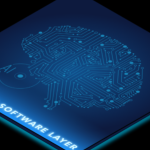Constantly embracing new technologies and solutions, the medical industry remains at the forefront of innovation, striving to enhance the quality and accessibility of healthcare worldwide. One of the most important developments in this market in recent years is the rise of the Internet of Medical Things (IoMT). This network of connected devices allows for remote monitoring, diagnosis, and treatment, expanding patient care beyond medical facilities and into our daily routines.
As a result, medical care has undergone a transformative shift, granting individuals greater autonomy in monitoring and maintaining their health. With the help of modern wearables and health trackers such as smartwatches, fitness bands, and glucose monitors, for the first time in history, people can continuously measure and track their vital signs, activity levels, and other biometrics without visiting a doctor or hospital. Any data captured by such devices can then be shared wirelessly with healthcare professionals via a centralised database, providing them with real-time insights into a patient’s condition and enabling timely interventions if needed.
The IoMT has also opened new possibilities for personalised and preventive medicine as well as telemedicine and home care. By leveraging the power of large data analytics and artificial intelligence, digitised healthcare can help identify patterns, trends, and anomalies in a patient’s health and provide tailored recommendations and feedback. Technology can also be utilised through remote consultations and examinations, which can reduce the need for physical contact and travel and ultimately enhance convenience and safety for patients and providers.
Continual advancements in technology are allowing engineers to leverage faster wireless connectivity and create devices with greater processing power, storage, and sensing functionality. Apart from the familiar fitness watches, a plethora of wearables like rings and smart clothing have hit the market. These cutting-edge gadgets offer an extensive range of medical services, from tracking fitness and monitoring vital signs to detecting early stages of cancer.[1]
However, smart medical devices can pose significant design challenges for engineers and developers, who need to ensure that the devices are reliable, secure, and efficient. Personal IoMT devices must be able to perform complex functions such as sensing, processing, and communicating biometric data while consuming minimal power and space. Additionally, since these devices are meant to engage with us, they are typically designed to be ergonomic, battery-powered, and wearable, which requires them to be lightweight, compact, and long-lasting. For designers of such products, it is usually a case of carefully balancing form and functionality.
A common approach to meeting these requirements in intelligent medical devices is to incorporate 8-bit microcontroller units (MCUs) into their core components. The reason why 8-bit PIC® and AVR® MCUs are so advantageous for medical devices is that they allow for effortless customisation of onboard hardware with minimal overhead, providing a desirable blend of performance capabilities and power efficiency. As a result, they enable the production of products that achieve incredible system efficiency without compromising on performance or costs.
Microchip Technology, a prominent company in the field of 8-bit MCUs, has been designing and manufacturing 8-bit PIC and AVR MCUs since the 1970s. Similar to their tailored automotive offerings, Microchip’s 8-bit MCUs offer several advantages specifically for IoMT and wider medical applications.
Microchip offers a variety of wireless modules and transceivers that can be seamlessly connected to their 8-bit MCUs, simplifying design considerations and enhancing system integration, making them ideal for compact wearable devices with limited space. Another key aspect of Microchip’s PIC and AVR solutions is the integration of on-chip Core Independent Peripherals (CIPs) which enhance versatility and provide a distinctive level of configurability to the market. By utilising CIPs, engineers can create efficient programs with minimal code overhead, design compact packaging, and decrease the overall cost of their bill of materials (BOM), all of which are essential for the success of wearable technology.
Microchip’s 8-bit MCUs are unique in that they do not impose any restrictions on customers who want to use their parts in devices that conform to the US Food and Drug Administration (FDA) Class I, II, or III medical device regulations. This flexibility allows customers to select the most suitable solution for their specific requirements. Development of Microchip 8-bit solutions is further simplified with the Microchip MPLAB PICkit 5 In-Circuit Debugger/Programmer. The kit, when used with the MPLAB X integrated development environment (IDE), offers a user-friendly graphical user interface (GUI) that facilitates rapid prototyping and portable programming for Microchip components such as PIC, dsPIC®, AVR, and SAM (Arm®) devices.
By utilising efficient 8-bit MCUs, the IoMT can thrive, offering increased benefits and possibilities for the medical industry and society. By incorporating intelligence into medical devices and making them accessible to users, we can empower individuals with the ability to take control of their healthcare. The simplicity and efficiency of 8-bit MCUs combined with the intelligence and connectivity of the IoMT enable engineers and developers to create revolutionary and meaningful solutions that have the potential to enhance the health and well-being of millions of people worldwide.
[1] https://news.mit.edu/2023/wearable-ultrasound-scanner-breast-cancer-0728
By Mark Patrick, Director of Technical Content EMEA, Mouser Electronics










